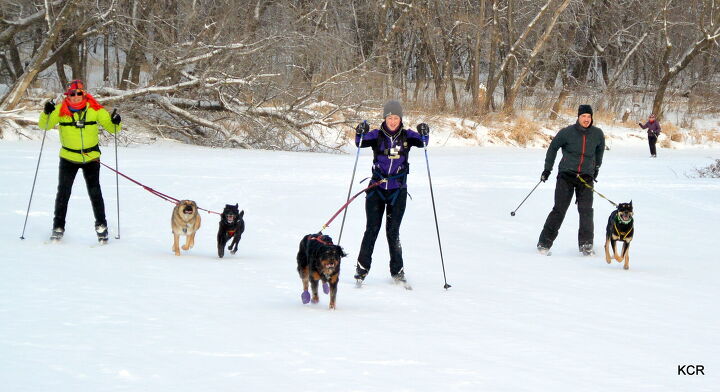How To Correct Common Bad Mushing Habits

The thrill of flying down the trail, gliding over the snow with a team of well trained dogs pulling in front. It’s the stuff of legend. It’s beautiful!
Commonly, people new to mushing sports want to GO, and just get going as quickly as possible, be it on skis, bikes or a sled. It’s not difficult to understand why – once they have the dog and the harness, it’s time to go. But it takes a lot of hard work and teamwork to have a dog trained and confident enough to pull to glory. But what if there was a shortcut? Skip all the training and just get going?
Related: Dispelling the Myths About Urban Mushing
Chasing the Rabbit
Mushers love to help – be it experienced veterans with many years of experience, or people totally new to the sport. Everyone has some advice to give. Well-intentioned people offer newbies a chance to come out and follow their established, already trained team. The idea being that the new dog, or new team, will have someone to follow to get the hang of it.
This is true… sort of. Having a new dog follow an already trained team will, in most cases, get the new dog running. The instinct to chase will kick in, and the dog will happily follow the other team. But there are a few problems with this training method.
What happens when you catch the other dog team?
I have seen countless times, when the team being chased is caught by the team behind, and a fight ensues. The inexperienced mushers thought things were going well, that their dogs were pulling and doing great. But the dogs thought this was a game of cat and mouse, winner take all. The dog in front may resent being chased, or be stressed by it. All this chasing may be triggering a predatory or aggressive reaction in the dos. When both teams stop, or the chasing team catches up, a fight is entirely possible. If you are chasing another team, know your dog’s body language. Only well-socialized, non-aggressive dogs should ever partake in this training method.
Overdoing It
The excitement of having another team to chase can sometimes be just too much for a new dog. They use up all their energy on the run out, and end up dragging their butt all the way back to the trail head. Practice makes perfect, and you want your dog to learn that there must still be enough gas in the tank to make it home at the end of a run. If you are chasing another team, ensure you stop both teams often enough for the newer team to catch their breath. Of course, constant stopping is frustrating on an established team and can also lead to some bad habits.
Related: 4 Dog Mushing Mistakes That Make You Look Like a Noob
Going Alone?
You gain what you train. Meaning, if your dog is trained to follow other teams, your dog will follow other teams. If you decide to take your dog out without the other teams, it is likely your dog won’ t be motivated to run. If you get cold, sustain an injury or equipment failure and need to turn back, your dog may not run without the other teams to follow. Working your dog alone is critical for safety. Going with a group is great, but there may be times you need your dog to go it alone. So practice on your own and build your dog up to be successful.
Hook Them Together
There are benefits from running with an established team. Ask a friend with a trained dog if your dog can be hooked up beside them for a run. The dogs should both be familiar with each other before attempting this. Keep the pace slow, and keep things fun. Sometimes running next to another dog can increase a dog’s confidence to get out there and do this.
Teach Line Out
I’ve had the most success with teaching dogs to run by training the “Line Out” command. Line out means get to the end of line, and wait there. Keep the line tight and lean into the harness. Once your dog has mastered this, it’s easy to train them to pull into the harness and get moving down the trail. Plus, if you get stopped for any reason, you simply go back to Line Out and begin again.
Keep training sessions short and fun! Mushing creates a bond with your dog like no other. While it may seem cumbersome to do lots of work in training at the start, it’s well worth it to have a trained pull dog for years to come.

Kevin Roberts lives for adventure. Together with his pack of rescue dogs and his husband, he spends as much time outdoors as possible. Kevin lives by the motto: "Get outside and play with your dogs!
More by Kevin Roberts
























